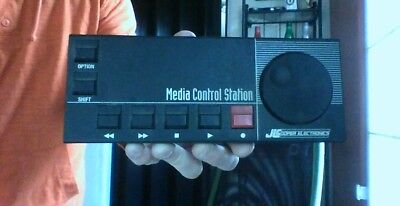Tashtari
PIC Whisperer
I've been trying to clean up and publish some of the tools I've been using for my ADB-related adventures. Neither of these are complex enough to warrant a TashName, but I want to put them out there just in case they might come in handy for someone else.
I've made an ADB protocol analyzer:

 github.com
github.com
And a test host:

 github.com
github.com
Both use the delightful PIC12F1840 and connect to some Python code on a PC using its UART.
ALSO!
Lately I'm kind of obsessed by rare and weird ADB devices. It all started with the Global Village A300 modem, then progressed to the media keys of the Apple Adjustable Keyboard (both of which I've documented over at TashNotes), but I need more! Anyone out there happen to have the Global Village A400 modem or the LaCie FM Radio or some other rare ADB device that is neither keyboard nor pointing device? If so, please get in touch, I'd love to work with you on documenting their protocol for posterity.
Also please let me know if you find any of my projects useful or would like to use them and need help.
I've made an ADB protocol analyzer:
GitHub - lampmerchant/adb-protocol-analyzer: A protocol analyzer for the Apple Desktop Bus (ADB).
A protocol analyzer for the Apple Desktop Bus (ADB). - lampmerchant/adb-protocol-analyzer
And a test host:
GitHub - lampmerchant/adb-test-host: A host for testing Apple Desktop Bus (ADB) devices.
A host for testing Apple Desktop Bus (ADB) devices. - lampmerchant/adb-test-host
Both use the delightful PIC12F1840 and connect to some Python code on a PC using its UART.
ALSO!
Lately I'm kind of obsessed by rare and weird ADB devices. It all started with the Global Village A300 modem, then progressed to the media keys of the Apple Adjustable Keyboard (both of which I've documented over at TashNotes), but I need more! Anyone out there happen to have the Global Village A400 modem or the LaCie FM Radio or some other rare ADB device that is neither keyboard nor pointing device? If so, please get in touch, I'd love to work with you on documenting their protocol for posterity.
Also please let me know if you find any of my projects useful or would like to use them and need help.




